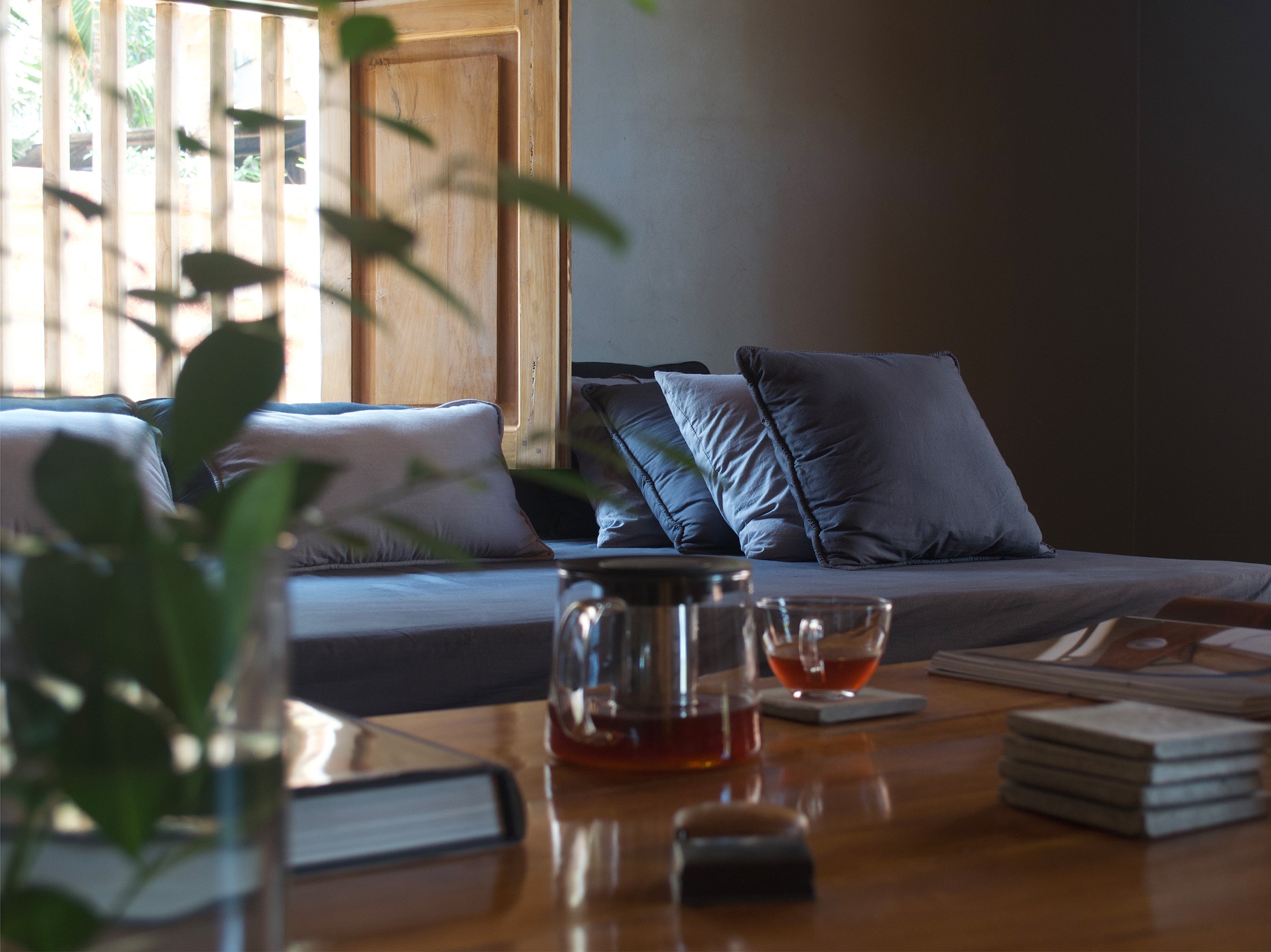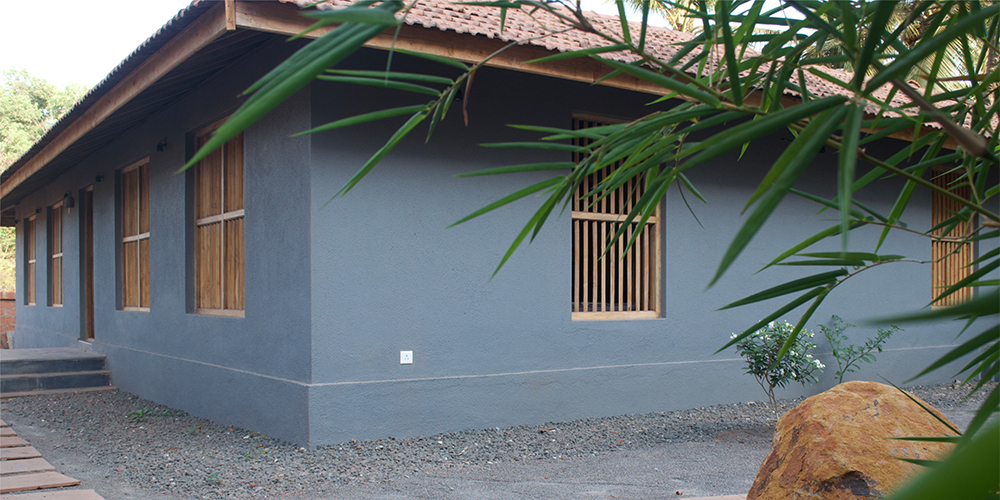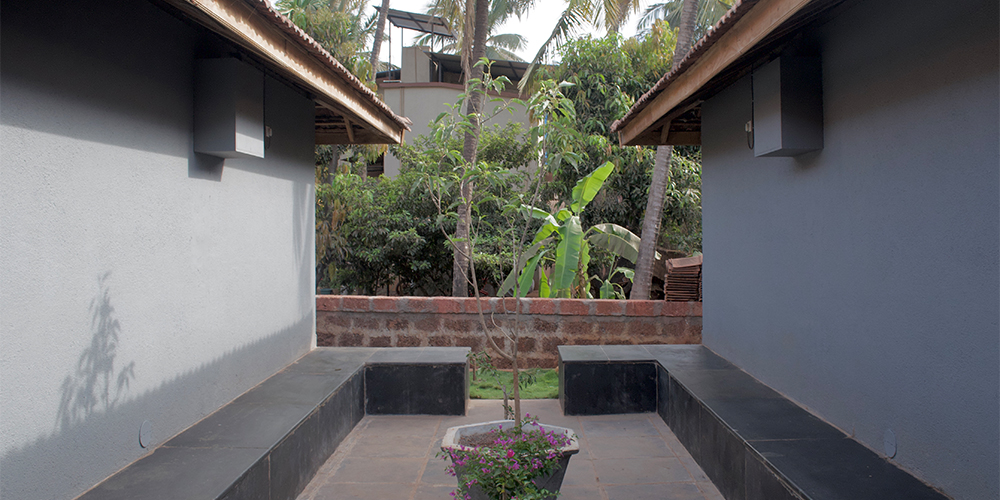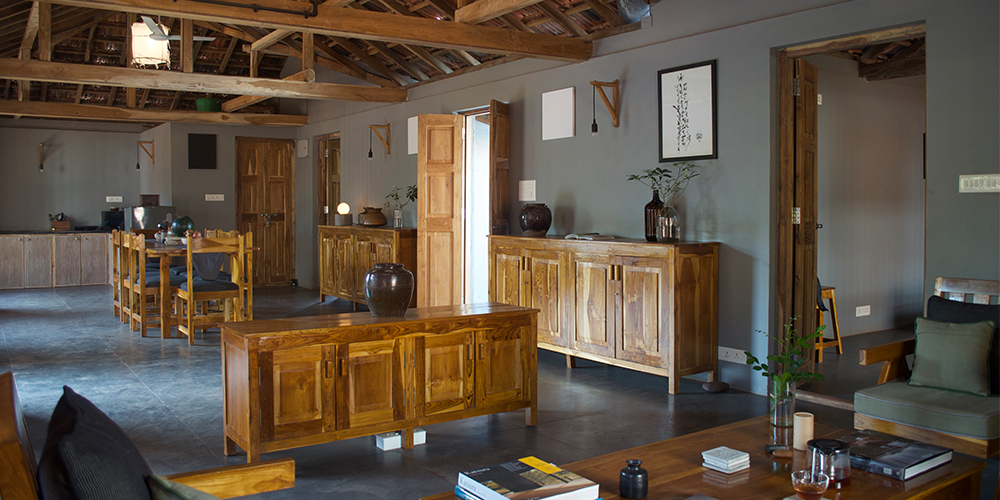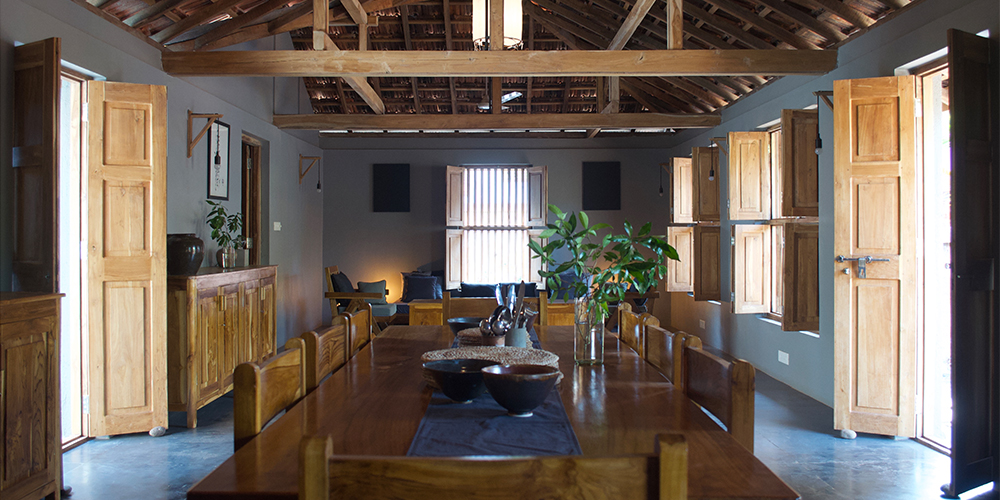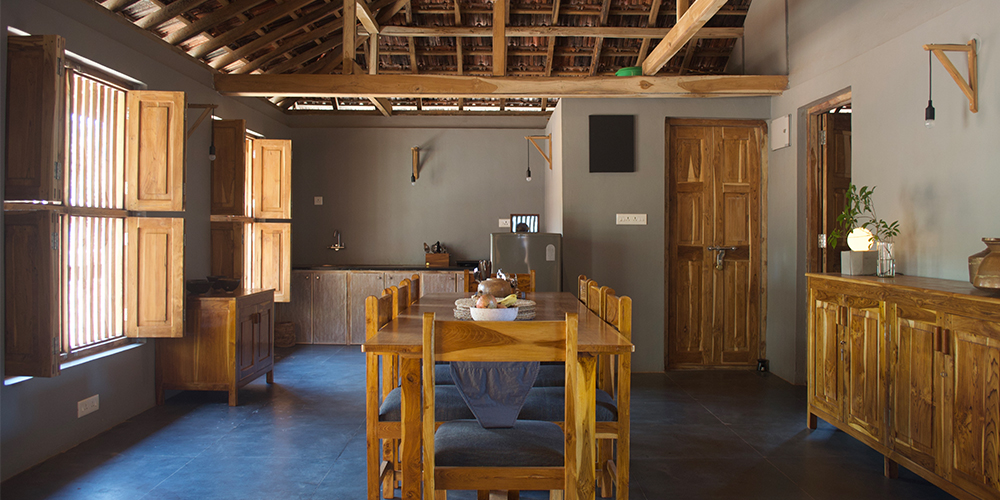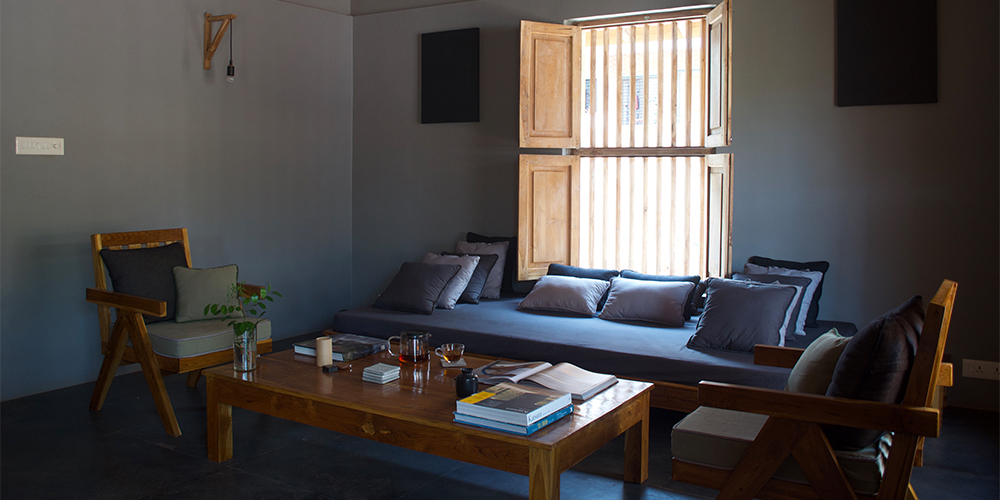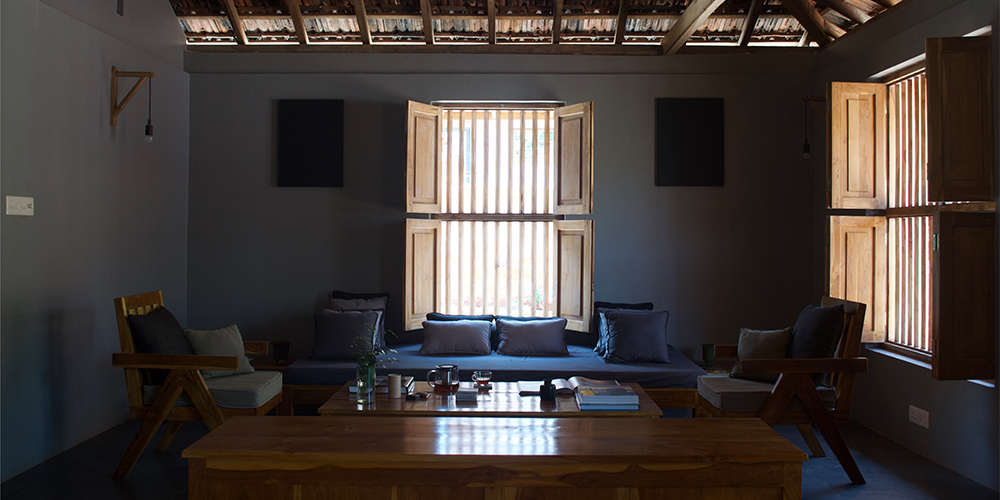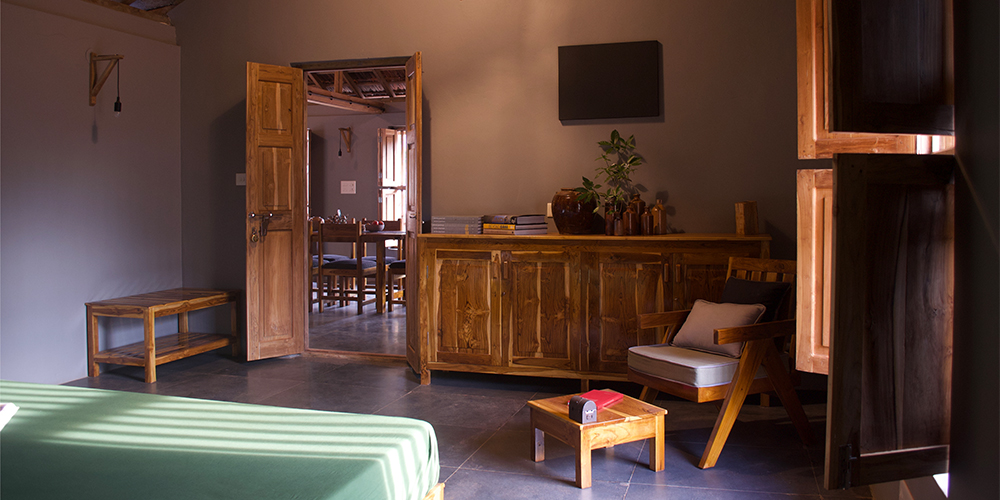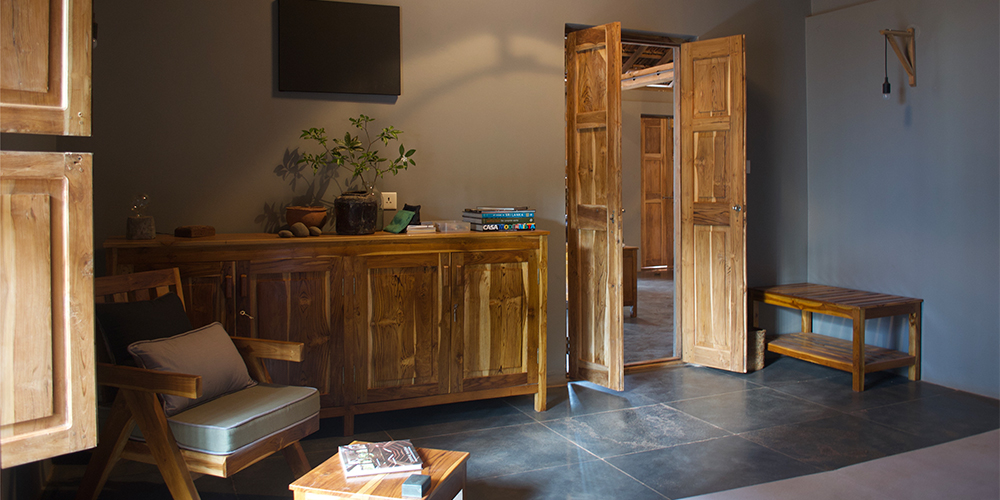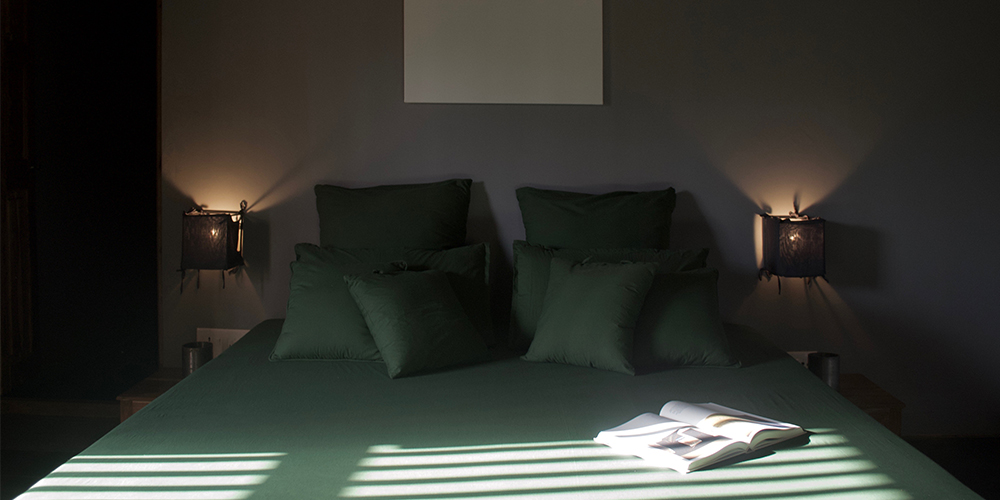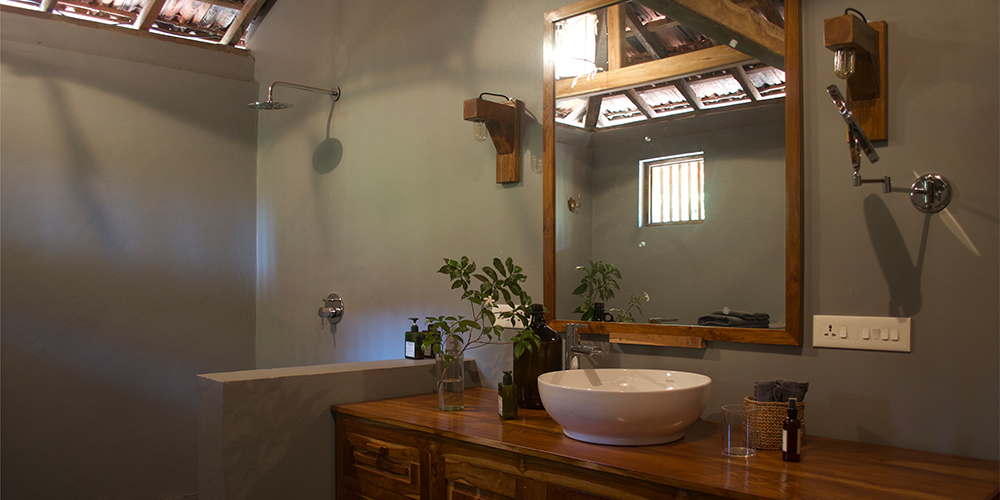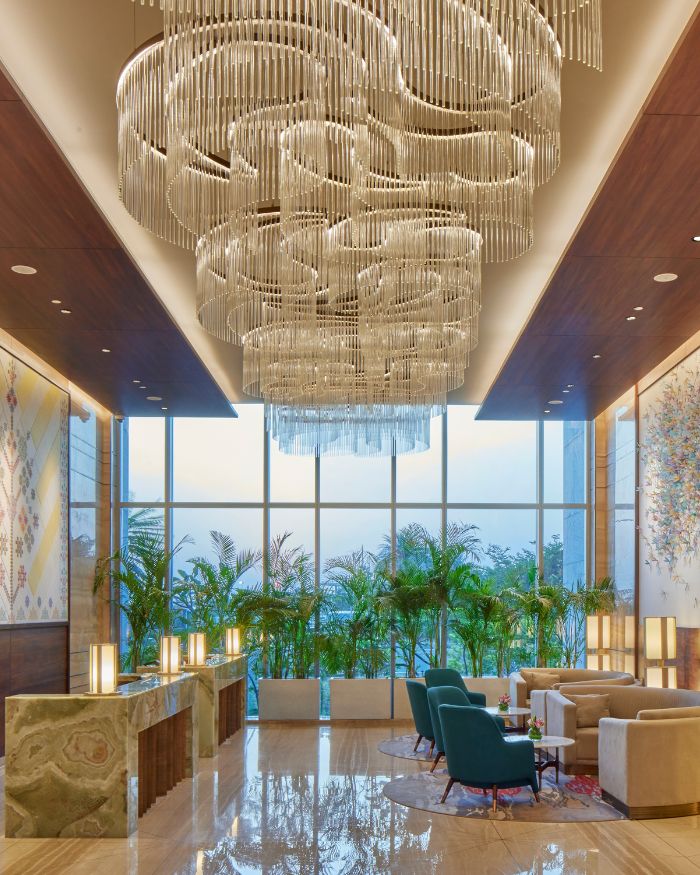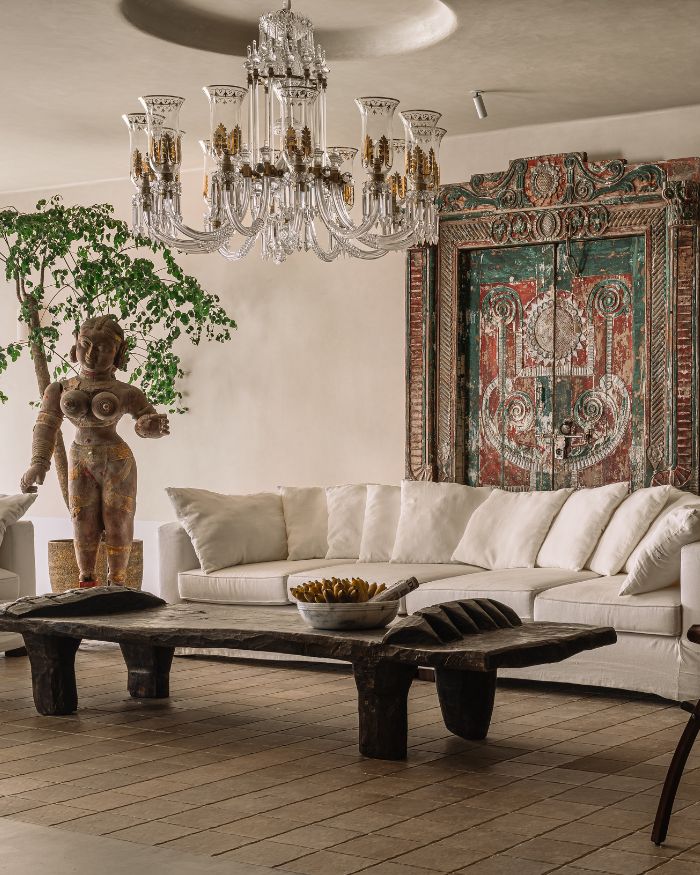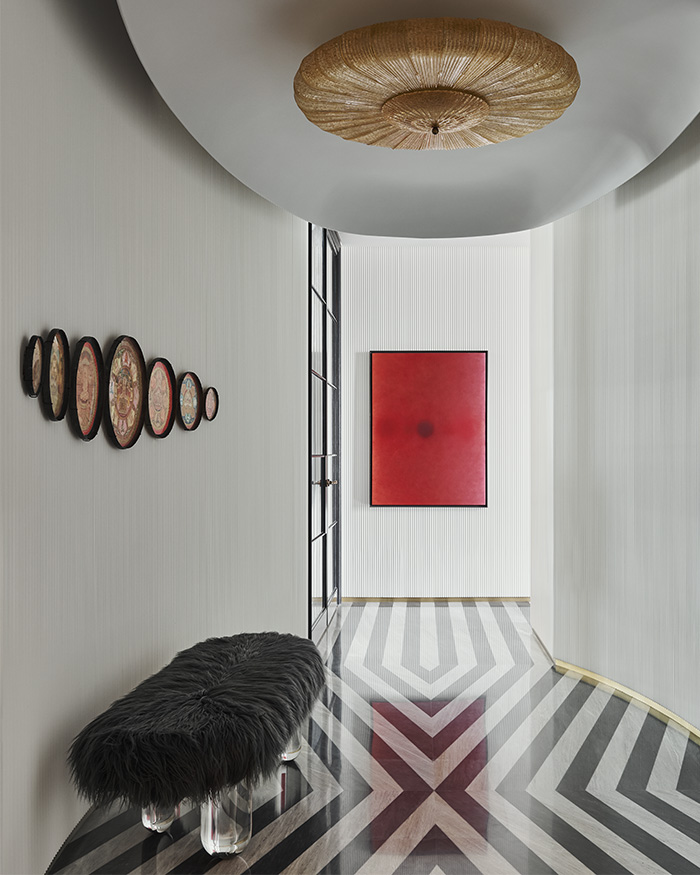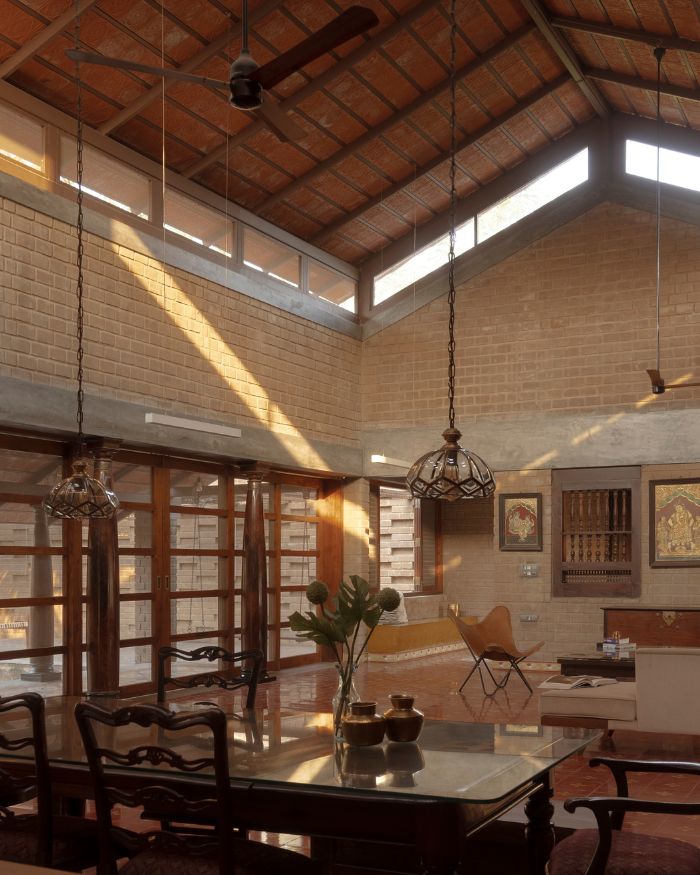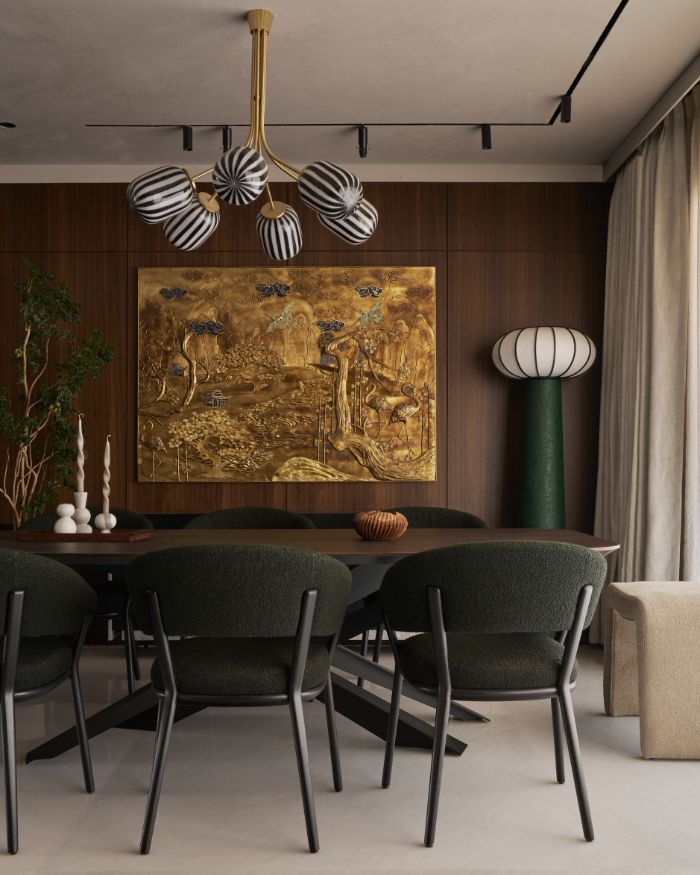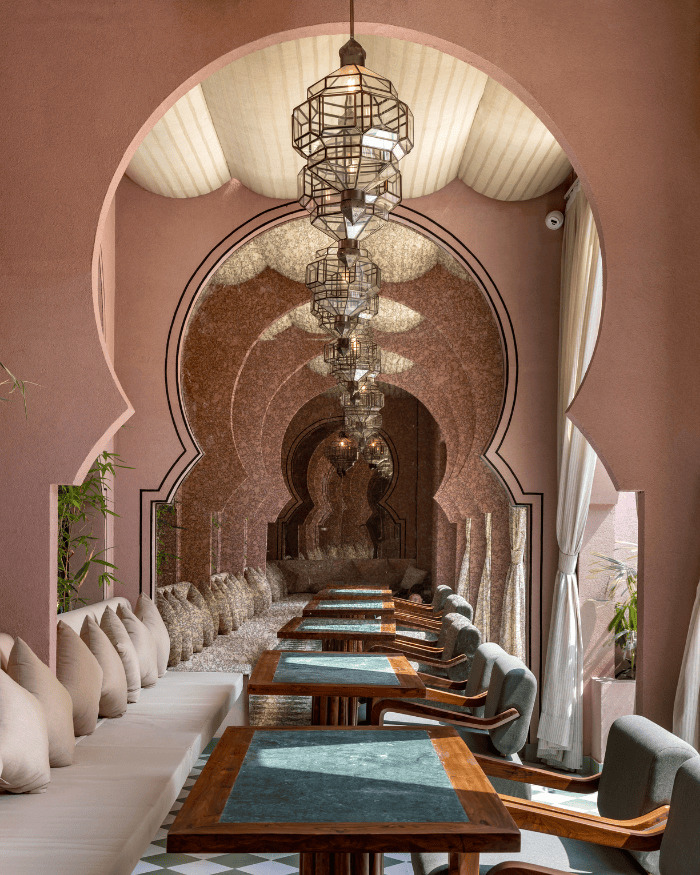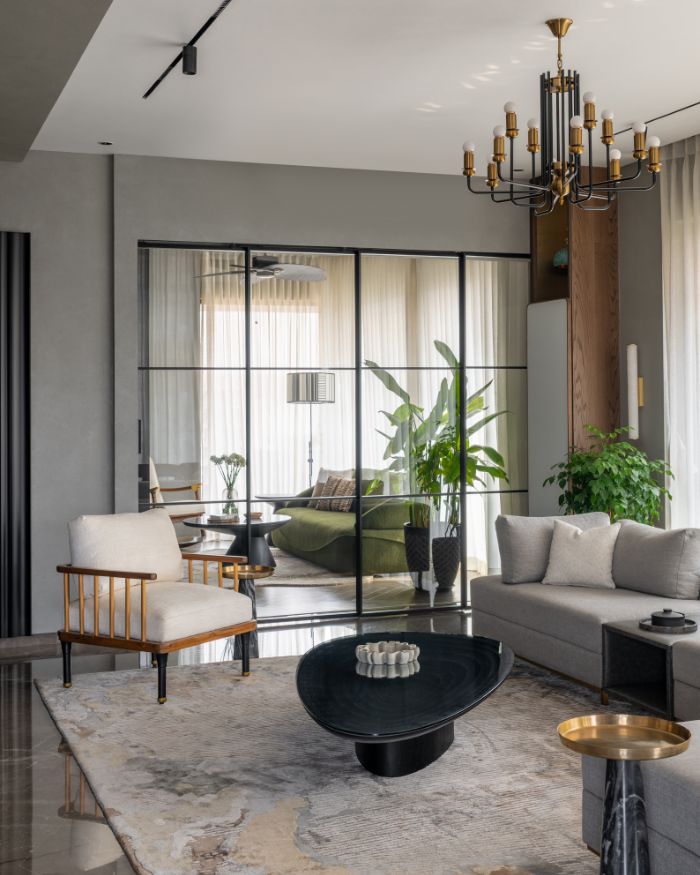Number 2259 is a house that owes its name to the plot of land it sits on, a densely forested patch in the Konkan town of Dapoli. “I spent my childhood in Dapoli and I wanted my first ever project to be in a place that was close to my heart, so I immediately thought of my hillside hometown. That was the biggest inspiration behind this project,” says Tejas Yelve, the architect and homeowner.
The 2,000 sq ft house forms a C-shaped enclosure that wraps itself around a modest courtyard—a versatile space brimming with possibilities from impromptu alfresco dining, outdoor social gatherings to, perhaps, a garden or swimming pool in the future.
A stone paved pathway leads directly to the main door of the house. An expansive living room is comfortably demarcated into two sections, with a cosy seating arrangement on the right and the dining area and kitchen on the left. The teak dining table is crafted locally and artfully strewn with decorative ceramic and stone pottery, while banana fibre mats are from Kishkinda trust factory in Anegundi village.
The north wall features large windows that bring in plenty of natural light. The living room opens out to the courtyard, adding to the feeling of openness and connection with nature, and a sense of nostalgic charm with a quaint courtyard layout that’s characteristic of the Konkan region.
This rustic elegant theme is seen in the interiors too. The bedroom is simply furnished with earthy-hued cotton and a locally crafted wooden credenza. Some pottery and a reading nook furnished with a chair and ottoman complete the look. The bathrooms have a minimalist design with bare, roughly plastered walls, a teak vanity with a tabletop basin and mirror lights crafted from waste material.
“My aim was to build a sustainable and eco-friendly home using local materials and labour. I have used laterite stone for the walls, which act as load-bearing structural element and adapt to the climate. They are locally available, sustainable and are in keeping with ancestral belief and research,” explains Yelve.
Kadappa stone for the flooring and teak for the roof frame, door, windows and furniture, along with the old Mangalore tiles for roof covers accentuate the earthy look. A warm colour scheme creates a cosy mood that goes well with the rustic charm of the abode.
“Designing a space with the intent to change one’s lifestyle is important to me. By creating courtyards, making large openings in the wall or by avoiding walls altogether and creating alfresco spaces, we bring the outdoors in. A person’s thought processes and moods uplift in proximity to nature. That’s why the courtyard plays an important role in my house. I can sit there and work, think, read books, or simply relax and have a good time,” says Yelve.

